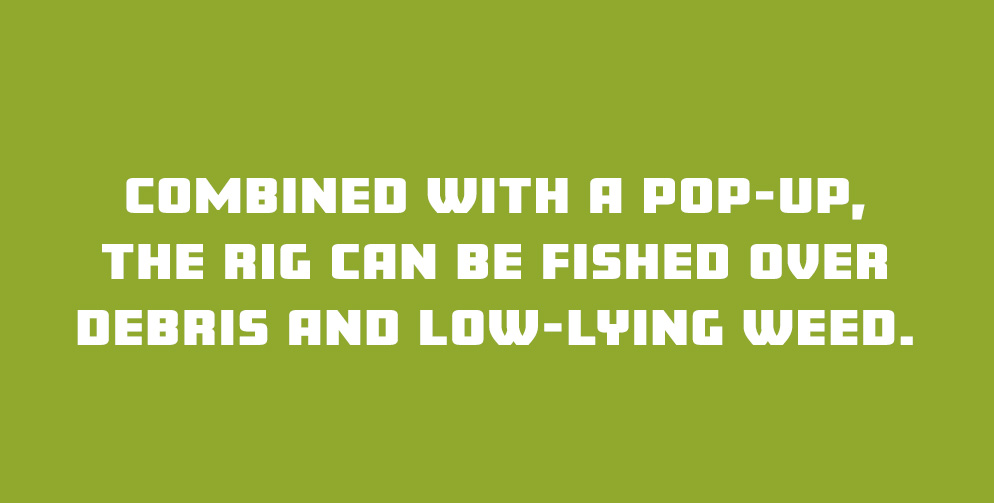Gaz Fareham explains why the Soft Boom Hinge aka 'The Cobra' is his go to rig - sharing his vast knowledge on the most effective set up to catch bites.
OZ HOLNESS explains how to set up a leadcore leader safely and the benefits of using this long standing favorite of many anglers…
It was way back in the mid nineties when a friend of mine Ian Brown first showed me the benefits of a material he was using to construct heavy weight, durable leaders. It came from the game fishing industry and was a tightly woven hollow braid with a thin lead wire inner that was used for deep trolling… Lead core as we know it.
The benefits were obvious at first sight, and compared to the tubing available at the time, it looked positively stealthy! Add to this the weight factor and abrasion resistance, it was something that became a staple item in many anglers’ terminal tackle armory.
It was not without its problems mind and learning how to use it safely and efficiently was key. This meant a bit of tinkering around with various knots, alongside the destruction of untold splicing needles, until eventually, I was happy with the strength and finish of the final result.
My finished leader had a small spliced loop at either end, which allowed me to attach it to my main line and construct the rig safely at the other. *With modern components now refined for this sort of application, it is so much easier to get things neat, efficient and working just how they should.
I set up all my leadcore helicopter leaders the same way and will explain now how and why I do things this way. It works really well for me and is pretty easy to achieve.
My leaders can be anything between 2-6 feet in length, with the final length dependent upon the nature of the lakebed. If the spots are small and the lake weedy, they are on the shorter side to allow them to sit well and not ride up on the weed or become a hinderance when playing fish. If the lake is clear and the spots are large, like silty gullies for instance, I will lengthen the leader to suit.




Once your top bead is seated on the silicone, a ring swivel is mounted with the large ring threaded onto the leader. This is followed by a buffer bead and then finally a small oval clip is spliced onto finish the leader and used to retain your lead. This is exactly the system I will use for much of my angling.
The only time I change this set up is if the weed is proving to be a problem and the size of lead required to reach the spots is larger than I would like to have hanging on the rig when playing a carp. In this instance, I exchange the small oval clip for a Heavy Ring and use a small plastic ‘C-Clip’, sheathed in a sleeve of silicone.
This performs two functions:
1. It allows casts and retrieves to be made in weedy situations safely without losing the lead.
2. If a carp powers into a weed-bed, the lead will safely eject from the clip under pressure, and often this is all that is required to get the fish moving and safely landed.
*With two strains of clip available to suit various situations you can adapt and fish effectively and safely. With the clip retaining the lead, the top bead can once again safely pull off in the event of a main line failure.

how to set up a
Leadcore Leader
This simple arrangement is incredibly versatile and can be used over a wide variety of substrates. With the ability to slide the top bead up the leader, the rig can now be effectively fished over those deep silty zones, low weed or even moved up further and fished as a long running chod, with the hook link flying way back up the leader.
This allows you to quickly and efficiently cast your rigs to different zones and maintain effective presentation. On the firmer ground, I keep the bead down close to the buffer bead, and on the softer ground will set a gap of four to six inches of play to allow the rig to settle.
The heavy nature of the leadcore naturally suits a slack, or semi slack line style fishing at close to medium range, with the leader becoming well disguised as it slowly sinks into the weed or silt.
For tight line angling in clear water, it may be more effective to use a clear or fluorocarbon style leader, as the leadcore would be a little obvious in those situations.
Modern leadcore is often flecked or disrupted in colour and tone to allow it to blend well on the bottom, and is perfectly suited to use in those situations where abrasion resistance on bars or mussel infested weed is necessary to give you the best chance of landing your carp.




how to make a
C-Clip Leadcore Leader



So I have used the leadcore for many years now in this way and it has rarely, if ever let me down. The rigs I use perform well on the material and it gives a nice thick buffer when playing carp.
Leadcore as a leader material is versatile, robust and its reliability has meant that it has stood the test of time. It’s my go to material for the majority of my angling and suits my style of fishing, allowing for quick changes of tactics for a whole host of different situations.








